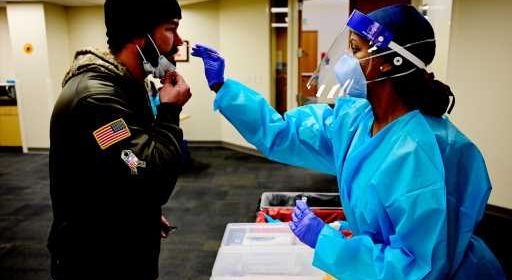Odds of getting COVID in Colorado are now about what they were last July

Despite COVID-19 case numbers that neared all-time lows over the last week, Coloradans’ risk of being exposed to the virus is probably about what it was last summer.
While cases are at levels last seen in mid-June 2020 — the low point for the entire pandemic in Colorado — hospitalizations and the percentage of tests coming back positive are more in line with July 2021, said Beth Carlton, an associate professor of environmental and occupational health at the Colorado School of Public Health.
“It looks very similar to summer of 2021, which is notably higher than summer of 2020,” she said.
Even if the level of virus in the state hasn’t reached levels seen at the lowest point of the pandemic, people can feel safer going out than they have in months, Carlton said. The Centers for Disease Control and Prevention reported only four Colorado counties still have “high” levels of transmission: Logan, Mesa, Pitkin and Rio Blanco.
“This is a very different phase of the pandemic, and the odds of being exposed are down,” she said.
The Colorado Department of Public Health and Environment reported 1,367 new COVID-19 cases in the week ending Sunday, which was the lowest number since summer 2020.
It’s worth noting that conditions are different now, though, Carlton said. People infected with the omicron variant are more likely to be asymptomatic, and the prevalence of home tests means that more positive cases aren’t being reported to the health department, she said.
“What gets reported as a case now is different than what got reported as a case 21 months ago,” she said.
As of Monday afternoon, 265 people were hospitalized with confirmed COVID-19 statewide, which was the lowest number since mid-July 2021. That’s about 100 more people who are receiving hospital care for the virus now than were in June 2020.
The percentage of tests coming back positive dropped to 3.1%, which also is in line with summer 2021, Carlton said. Positivity rates in the early months of the pandemic aren’t particularly reliable for comparisons over time, because the shortage of testing supplies pushed them up, she said.
It’s not clear if transmission of the virus will eventually fall to the lows seen in summer 2020 in the next few months, Carlton said. While spread isn’t expected to increase any time this spring — unless a new variant emerges — no one knows how far transmission will fall before it starts to plateau, she said.
The latest state modeling report, released in mid-February, had projected about 240 people would be hospitalized at the start of March, suggesting the rate of decrease has slowed down somewhat since then.
“We just don’t know where the bottom is going to be,” she said.
Subscribe to bi-weekly newsletter to get health news sent straight to your inbox.
Source: Read Full Article